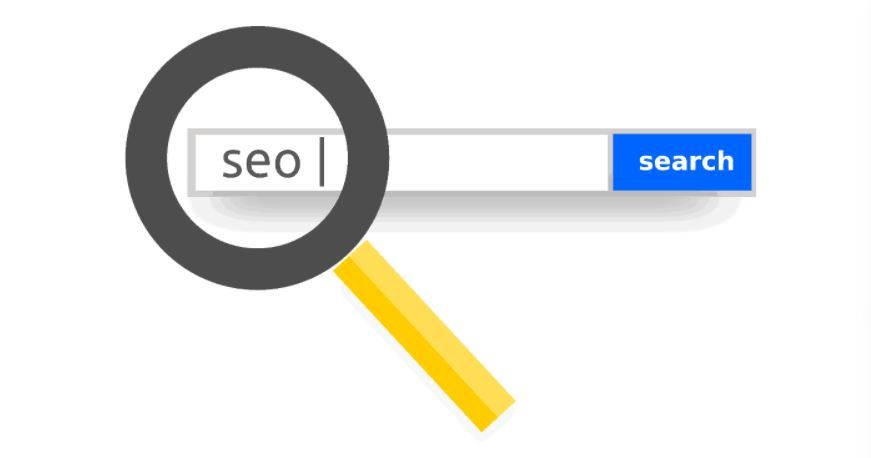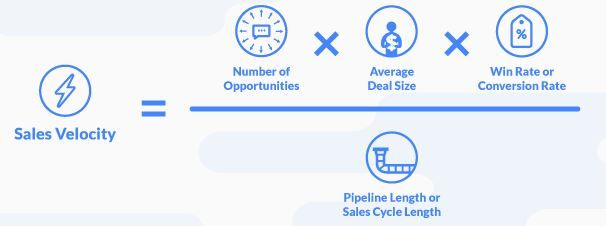Aloha, Amazon Seller!
Interested to grow your product’s visibility and ranking on Amazon to drive sales and conversions? Read our blog to find out how to apply the the most relevant criteria of Amazon Search Engine Optimization for the best result.
Every seller who wants to make money on Amazon understands that the product they sell needs to stand out among hundreds of millions of other items sold on the marketplace and among thousands of products sold in their category. If they don’t, they’ll most likely learn a very painful lesson by losing money instead of earning.
You’ve probably heard certain terms associated with the products that appear on the first Search Engine Results Page (SERP) and sell most – these are ‘visibility’, ‘discoverability’, ‘ranking’, ‘Best Seller Rank’, and more. These products, the winners of the game, were selected by Amazon based on certain criteria. It’s a commonly known fact, that 96% of clicks go to the top 4 search results of page 1.
This means, that if you want to sell more, you’ll need to increase your visibility and you’ll want your product to be discovered by shoppers on page 1 under number 1 when they make a search for the product of your kind. This will be hard work considering high levels of competition on Amazon and will depend on how crowded is your category and target niche, and how well you’ve made your job on being compliant with Amazon’s search criteria.
Amazon is different from many other online retail marketplaces by high standards of customer service, and it focuses on offering shoppers the items that are the most relevant match to their search query, this way increasing customer satisfaction and driving recurring purchases on the platform. The effective level of search relevance, when a buyer can find exactly what he was looking for, at the best price, and of great quality, is achieved through Amazon’s A10 search Algorithm.
Amazon A10 (formerly A9) search algorithm was developed by A9.com, an ex-subsidiary of Amazon that creates search engine and searches advertising technologies, headquartered in based in Palo Alto, California, with teams all over the world.
A10 algorithm operates in such a way that the buyer gets on their first page the best-performing inventory optimized by the most relevant keywords. Therefore, if you want that your product does not pass by the attention of your potential customers, you’ll need to make a Search Engine Optimization (SEO) for your product listing.
In this blog, we will discuss what is Amazon SEO, how does Amazon search engine ranks your product listing, and the criteria you should consider when selecting your Amazon SEO strategy.
What is Amazon SEO?
Amazon Search Engine Optimization, SEO Amazon for short, is the method of increasing the quality of product listings or a storefront to comply with the criteria of Amazon's ranking algorithm, A10. Amazon SEO optimization ranges from the implementation of the best-performing keywords in a product’s title and description and using A+ content, to growing your item’s sales velocity, conversions, and tailoring your PPC campaigns to effectively match your marketing strategies.
Search optimization on Amazon means that you should optimize your product listing which will help your item rank higher in Amazon search results, thus increasing visibility, driving more targeted traffic converted to more sales.
As said, Amazon implements certain metrics to rank your product in customer search results. These criteria are used by the Amazon A10 algorithm. Since A10 is Amazon’s proprietary algorithm, they are not exposing the exact criteria considered by the search engine. However, the general criteria are determined.
Knowing these criteria and applying them in the right way in your Amazon SEO strategy is a very important tool to grow sales.
How Does A10 Algorithm Work?
Whenever a shopper on Amazon enters a search query in a search bar to find a product they want to buy, the Amazon search engine picks out the most relevant results first, and further ranks them in the order of relevancy.
The search algorithm selects a high-ranked product based on researched high-ranked keywords included on the listing, quality images, A+ content, positive reviews, and more, to show your item at a number X on the number Y page. The lower is the number, the higher is the rank.
High ranking is important because shoppers usually click on the first search results and seldom click on the items on the second page and further. If your product is ranked below page 3, you’ll most likely not sell anything.
What Are the Ranking Criteria Considered by the A10 Algorithm?
There are several types of criteria applied by A10 to select the best sellers. Basically, they are relevance-related, performance-related ranking factors, and those measuring customer satisfaction. Relevance-related metrics include listing optimization and highly relevant keywords; performance-related factors include sales velocity, conversions, Click-Through Rate, and other parameters of product performance; customer satisfaction includes positive review rate, positive feedback, order defect rate, and more.

Relevance-Related SEO Criteria – Keyword and Listing Optimization
Among the most valuable criteria considered by the A10 Algorithm are listing keywords relevancy and completeness of product description. Search algorithm determines the relevance of your content to the customer search queries. If your listing has a clear title and structure and includes optimized high-ranking keywords, your listing will be highly ranked by A10. Thus, SEO for the Amazon store is an essential part of your marketing strategy.
Keyword Optimization
The first thing you’ll need to do is include keywords in product listings. These should be only the keywords relevant to your product, otherwise, the traffic will not convert. Imagine that a shopper looking for a mechanical press machine finds a garlic press you sell. This is definitely not what he is looking for and certainly, a shopper will not buy your product.
In order to determine the efficient and high-ranking keywords, you’ll need to do keyword research – manual or automatic, with the help of specialized Amazon seller tools, or both. You should determine your target audience, use your Amazon Seller Central options, and look at your competition.
Read how to do keyword research here.
Frontend and Backend Keywords
Keywords matching customer search terms on Amazon help buyers find a product as closely relevant to their search query as possible. For that purpose, Amazon marketplace SEO includes two types of search terms – frontend and backend keywords.
This is similar to any customer service or website. There you have a front-end, customer interface, and back-end - software and hardware responsible for the ‘inner’ part of service operation, and invisible to that service user.
Frontend keywords are primary search terms included on product listing and visible to the buyers. They are located on product listings within product titles, bullet points, product descriptions, and other product details.

Amazon Search Terms Guidelines
Amazon has put together the guidelines regarding usage of frontend keywords, emphasizing, that they should be precise, relevant, and have high Amazon keyword search volume.
When entering keywords, a seller should:
- Observe the length limit;
- Include synonyms;
- Include spelling variations, no need for misspelling;
- Include abbreviations and alternate names;
- You can use all lower case;
- You don’t need punctuation, such as: ";", ":", "-";
- Separate words with spaces;
- Don’t repeat words within the Search Terms field;
- Don’t include your brand or other brand names in Search Terms;
- Don’t include ASINs in Search Terms;
- No need for stop words such as “a,” “an,” “and,” “by,” “for,” “of,” “the,” “with,” and so on;
- Use singular or plural, no need for both;
- No temporary statements such as “new,” or “on sale now”;
- Don’t use subjective claims, such as “best,” “cheapest,” “amazing,” and so on;
- Don’t add abusive or offensive terms.
Backend keywords are search terms that shoppers can’t see, but they help boost your product visibility by being invisible themselves. Though buyers cannot see these keywords, they are indexed. Adding backend keywords to your listing gives you the possibility to include the search terms you were not able to squeeze in the visible page of your listing.
You can read everything you need to know about the backend keywords here.
Product Listing Optimization
Apart from high-performing keywords, your listing content and quality parameters also matter for ranking.
An optimized product listing should contain the following elements:
Product title - brand, model type, and number, product type, size and quantity, power output requirements, color, design, trademarks, or patents (if applicable).
Product description – the best practices include making it readable, telling a story, including bullet points, structure, convincing.
Also, mind that Amazon has stopped supporting HTML on product descriptions due to security reasons. Read how to take care of that and still keep your listing structured here.
High-quality product photos - include high-resolution images, preferably on a white background, taken from multiple angles.
A+ content - use A+ content to add rich texts, videos, images, and brand stories to your brand.
Read how to use A+ content here.
Performance-Related Ranking Criteria
The most important performance factors of SEO for Amazon considered by A10 are sales velocity and conversions. No wonder, since the more money and profit your inventory brings to Amazon, the higher it will be ranked.
Relevance-Related Ranking Criteria Considered by A10:
- Sales velocity;
- Seller authority;
- Impressions;
- Sales History;
- Click-Through Rate (CTR);
- Conversion rate (CVR);
- Organic Sales;
- Internal Sales;
- Off-Site Sales;
- PPC sales.
Sales Velocity
This metric shows how much money a product makes over time. Sales velocity measures the number of opportunities (impressions) multiplied by the average sale and multiplied by the conversion rate, all of that divided by the sales cycle length.

Conversion Rate
In turn, the conversion rate is the percentage of visits to your product listing that convert (end up in a sale).
Conversion Rate = Total Order Items / Sessions
In Seller Central, you can check the conversion rate of your items in Reports –> Business Reports –> Sales and Traffic –> Order Item Session Percentages.
PPC Campaign Efficiency
Though the efficiency of your advertising is not attached as high value as it was previously (by the A9 algorithm, formerly applied by Amazon), it still matters, and moreover, it’s important for sellers themselves. Sellers need to know whether their ads pay off. You can determine that through a special metric on Amazon – Amazon ACoS (Advertising Cost of Sale). It’s is an essential metric showing how many cents per each dollar of revenue Amazon seller advertising earns.
Customer Satisfaction Ranking Criteria
These criteria, as the name prompts, indicate customer satisfaction rate indicators. To better rank with regard to these factors, you need to take care of negative reviews, increase the quality of your customer services, and more.
Customer Satisfaction Ranking Criteria Considered by A10:
- Negative seller feedback rate;
- Customer reviews;
- Order processing speed;
- In-stock rate;
- Perfect Order Percentage (POP);
- Order Defect Rate (ODR);
- Exit rate (the percentage of times a customer views your listing and then exits Amazon).




